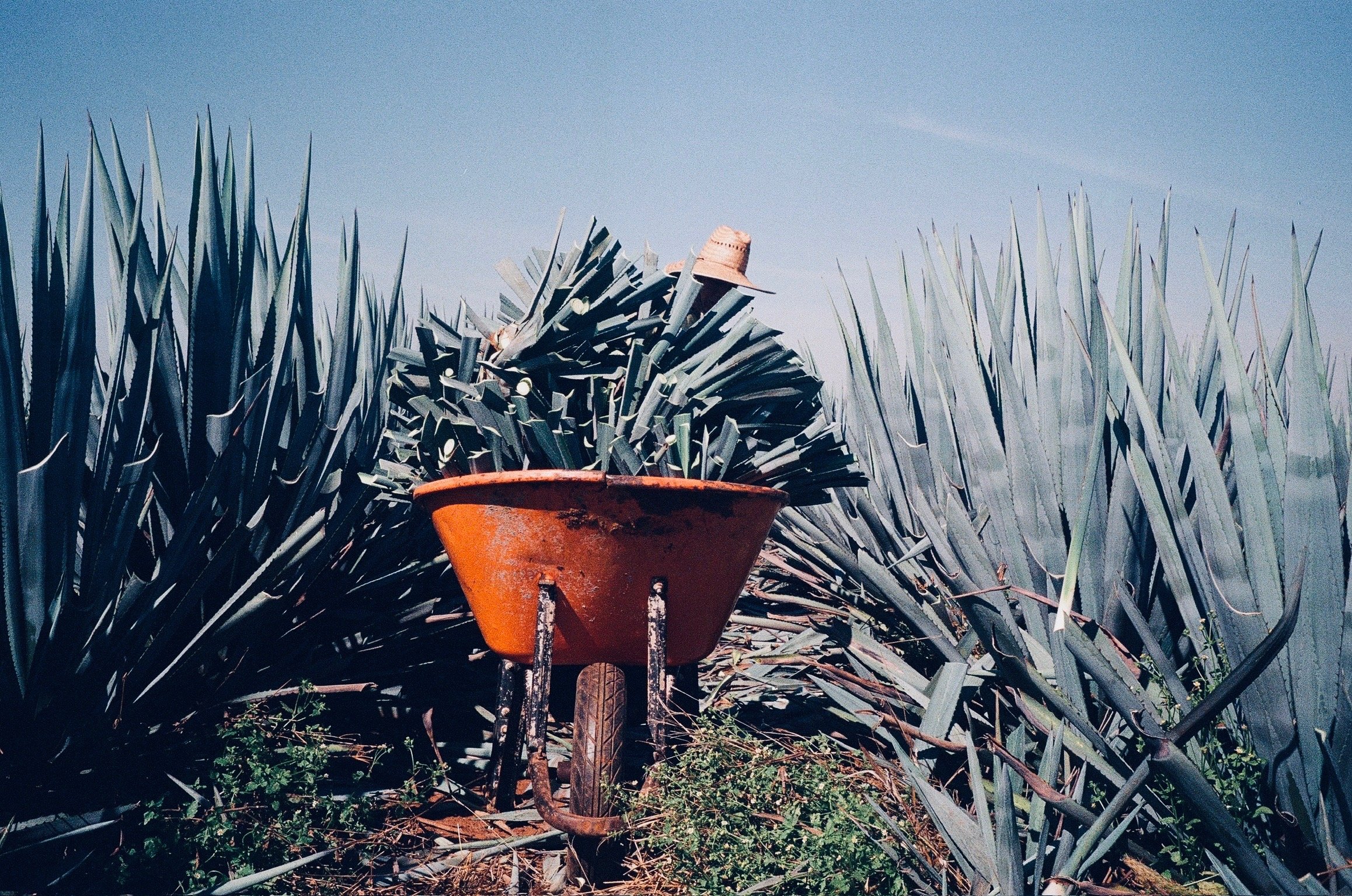Fertilizing
Similar to what our friends in MX have shared with us, our fertilizing programs is based upon first growing roots, then the plant and lastly, the fruit.
In the first 1-2 years we have used bio-stimulants, compost teas, amino & humic acids to help stimulate root growth. When using a blended fertilizer of nitrogen, phosphorus & potassium (NPK) we recommend a blend like a 3-10-3 mix. While nitrogen helps with plant color and overall health, a higher percentage of phosphorus is to help the roots. The idea is to build a strong root base to grow a healthy plant upon.
During agave’s midlife, between 3-4 years, we plan on a more balanced NPK ration like 7-7-7, increasing the percentages of both nitrogen and potassium while scaling back on the phosphorus percentage.
In the last third of the agave’s life, we will be more focused on sizing fruit by applying more potassium in the mix. Perhaps something like a 2-5-10 NPK mix to finish the crop.
It’s best to consult with an agronomist when considering any such recommendations. For example, you need to know Ph levels of your soil and water applied prior to dialing in on fertilizer program.
ADDITIIONAL INFORMATION:
Plant nutrition/tequilana/Weber Azul
Some important things to know. 1) soil type, composition, and fertility, and 2) plant health and nutritional profile. Both can be obtained from labs which take samples of either soil or plant petioles.
Visual symptoms of either too much of a nutrient (toxicity) or too little (deficiency) result in plants which appear stunted, have poor root growth, discolored leaves. Often, leaves will be thin, curling at their edges and turn yellow with necrotic leaf perimeters.
Primary plant nutrients include Nitrogen, Phosphorus & Potassium (NPK). Proper amounts of nitrogen ensure healthy blue-green leaves. Phosphorus stimulates root growth and flowering while Potassium supports overall plant health and fruit sizing.
Secondary nutrients include Calcium (Ca), Magnesium (Mg) and sulfur all assist in overall plant health often time allowing the plant to better process/metabolize primary nutrients either applied or found in soils.
Macronutrients include Boron (B), Copper (Fe), Iron & Zinc are present in plant tissue in very small amounts relative to those mentioned above. Think of them as supplements or vitamins that also assist in overall plant health.
Target Ranges for these Nutrients are listed below:
PETIOLES SOILS
Primary Nutrients: Preferred Range (PPM) Preferred Range (PPM)
Nitrogen (N) 210 – 278 28 - 29
Phosphorus (P) .35 – 42 25 - 36
Potassium (K) 3.55 - 4.25 405 - 475
Secondary Nutrients:
Calcium (Ca) 3.85 - 4.60 2500 - 3540
Magnesium (Mg) 1.20 - 1.45 545 - 770
Micro-Nutrients:
Boron (B) 58 – 69 .6 - .9
Copper (Cu) 36 – 42 2.7 – 3.9
Iron (Fe) 179 – 212 32 - 46
Zinc (Z) 60 – 70 1.67 – 2.4
In summary, if your tequilanas appear unhealthy, check your soil and plants to determine if either are suffering either from insufficient or excess nutrition. Engage a certified Pest Control Advisor (PCA) for recommended action plans.
